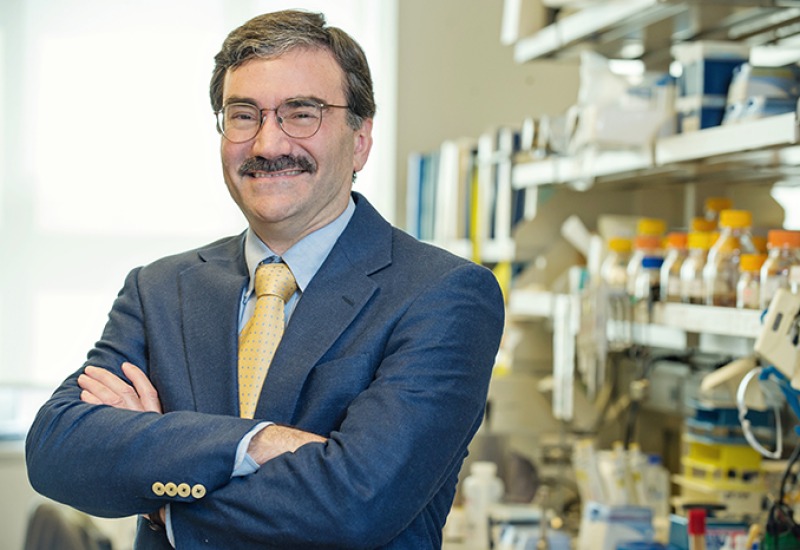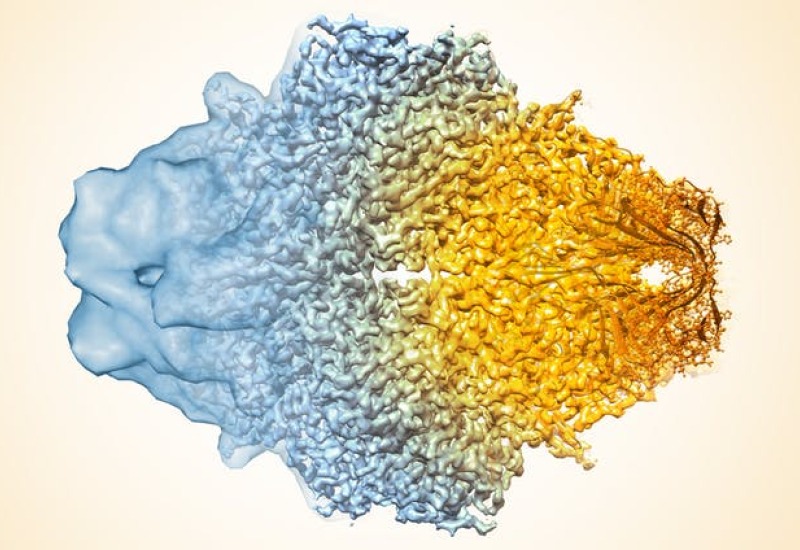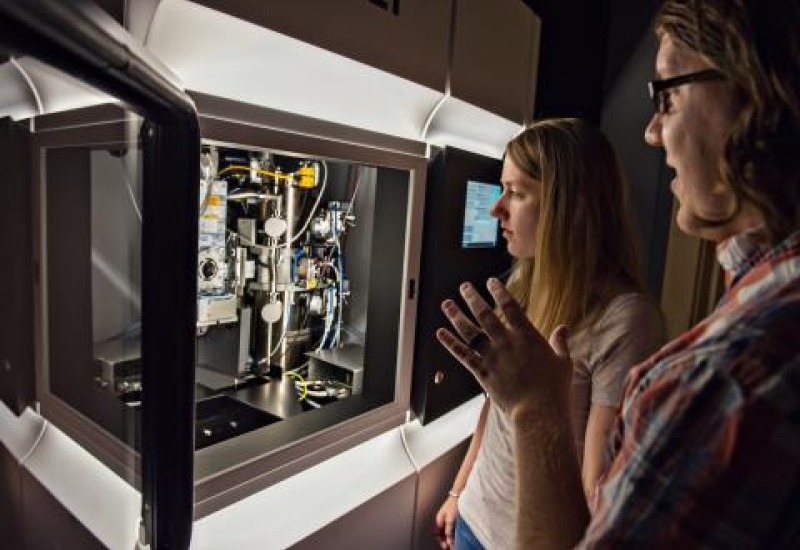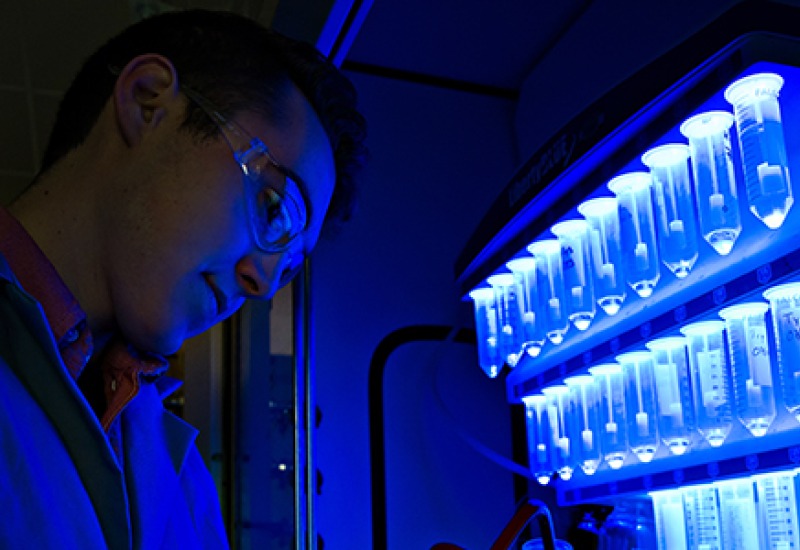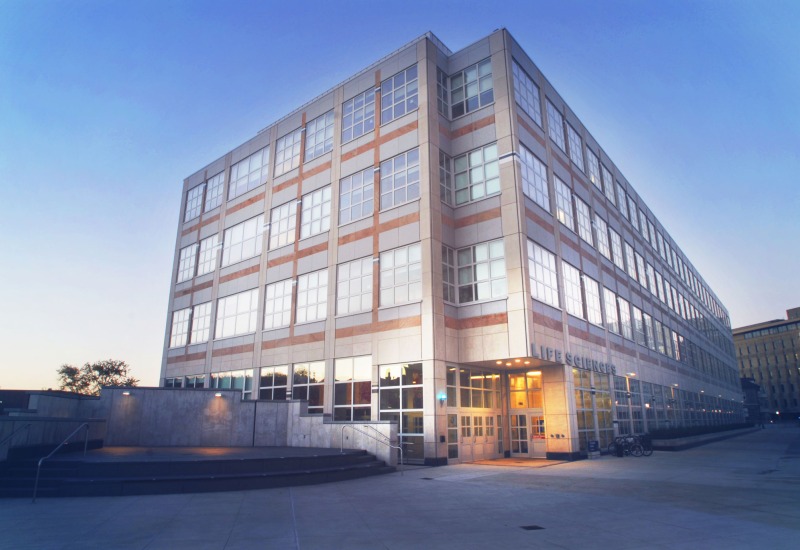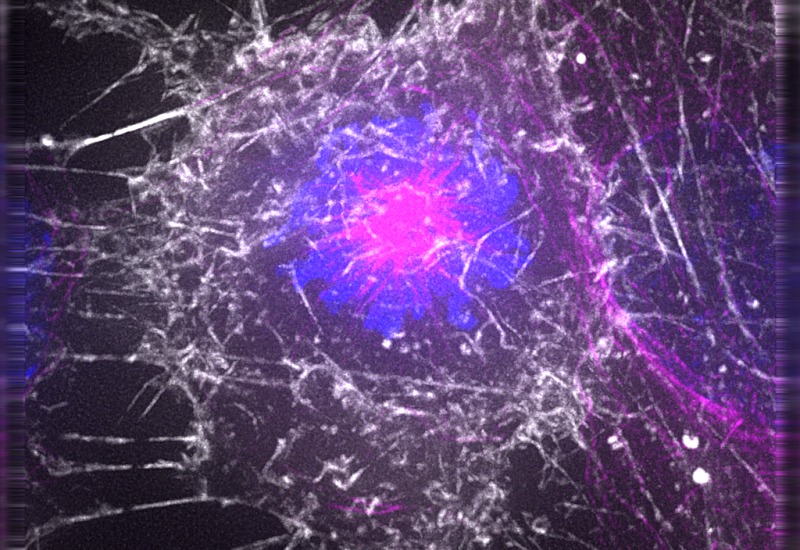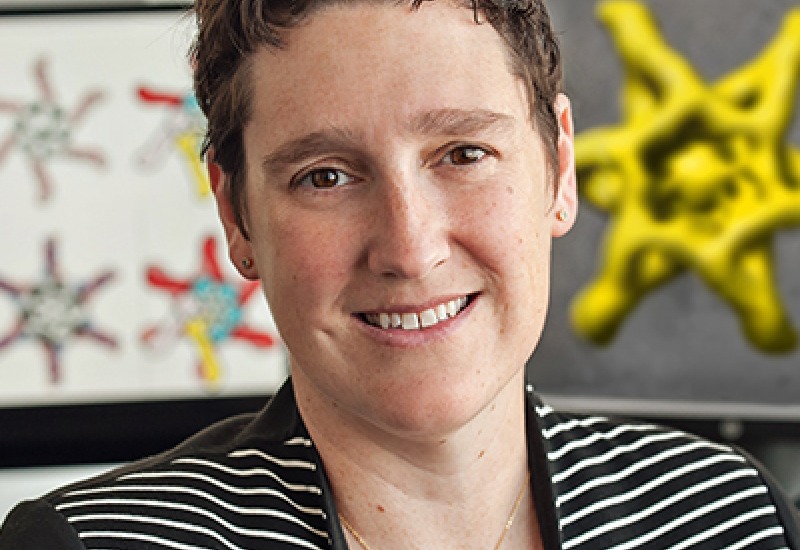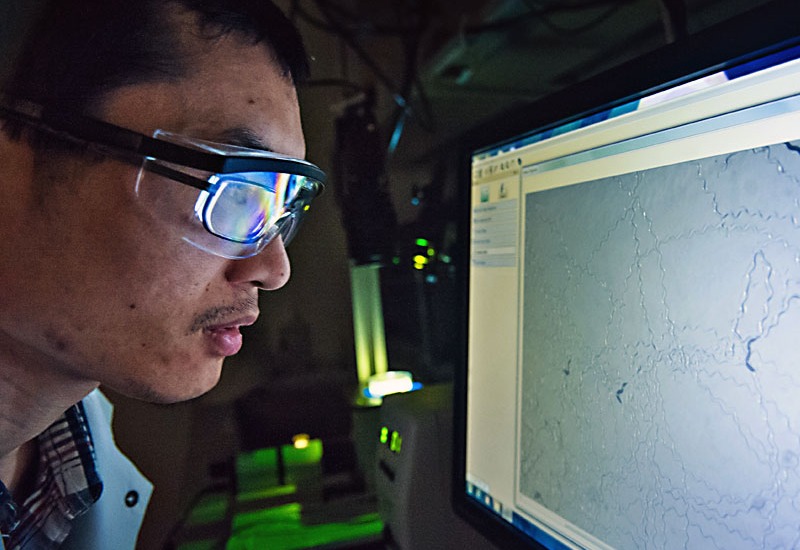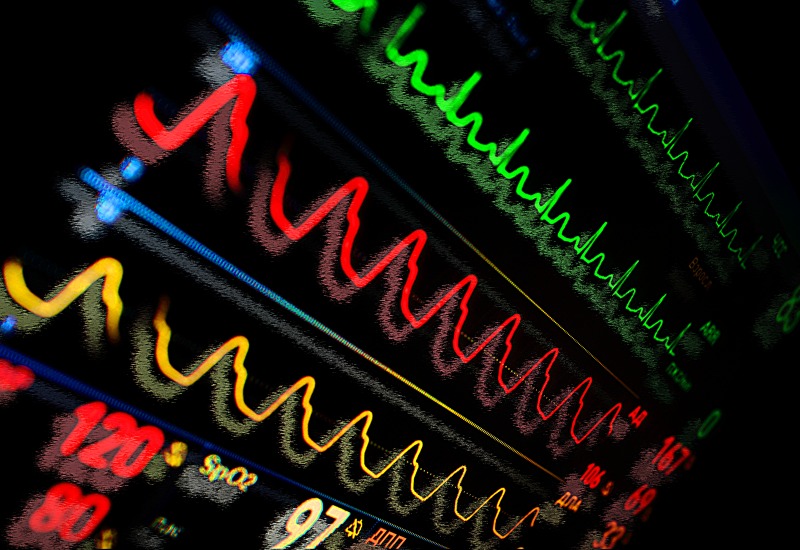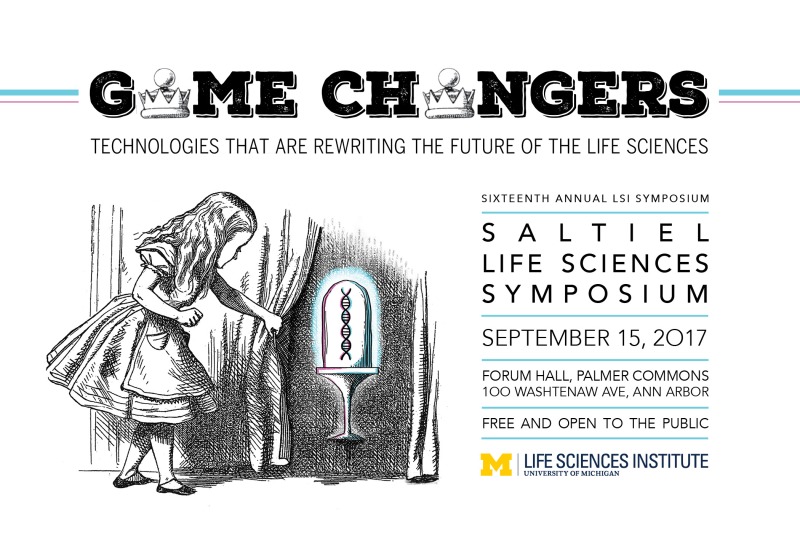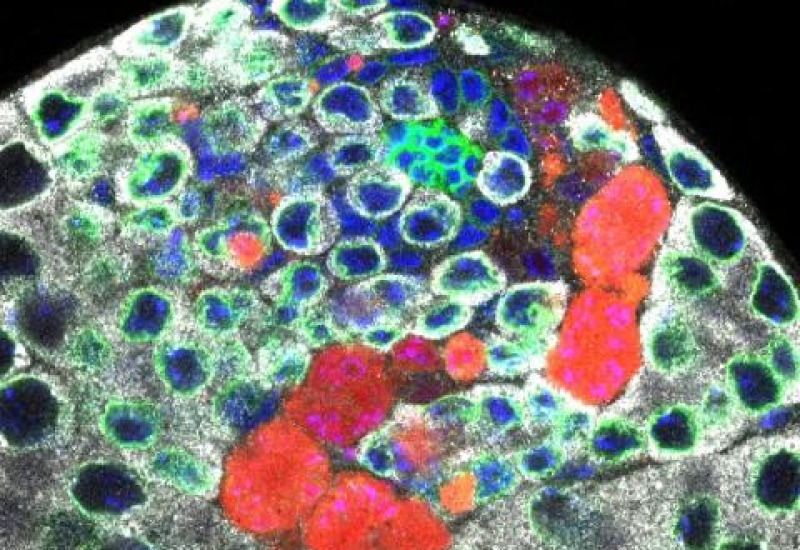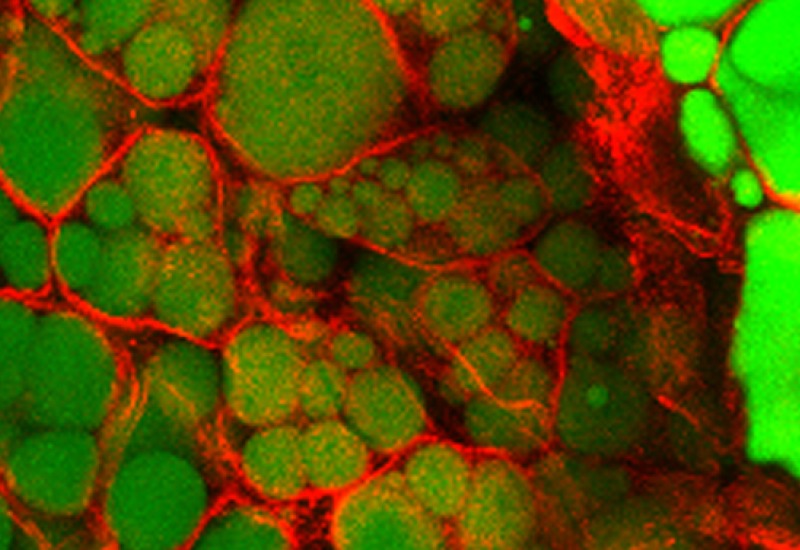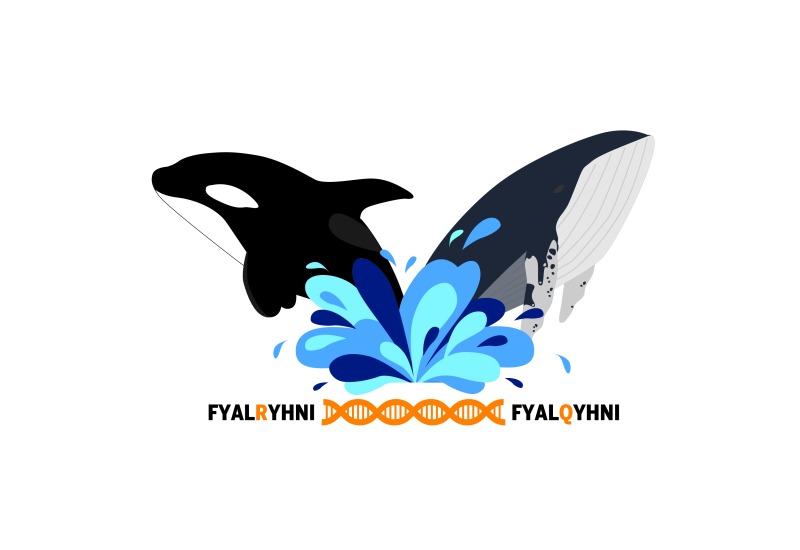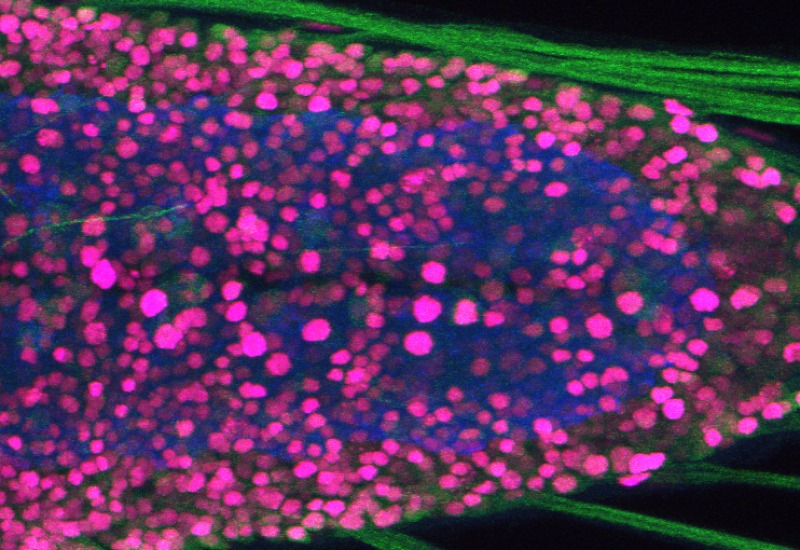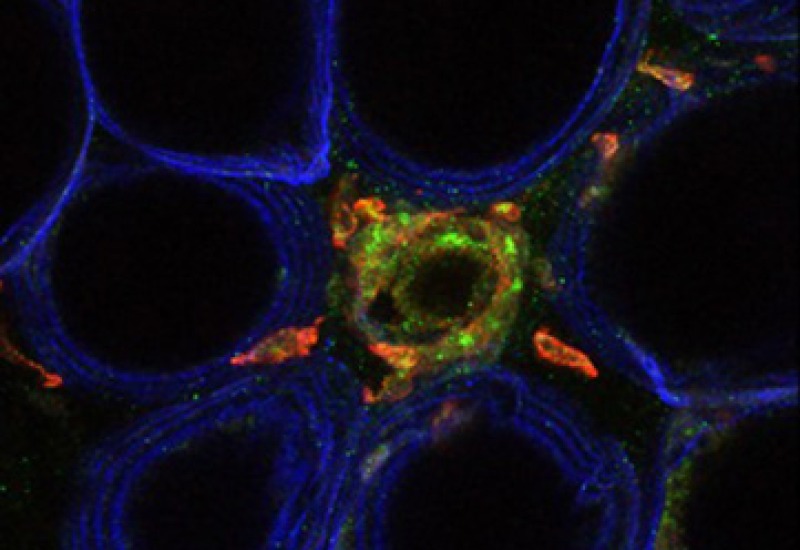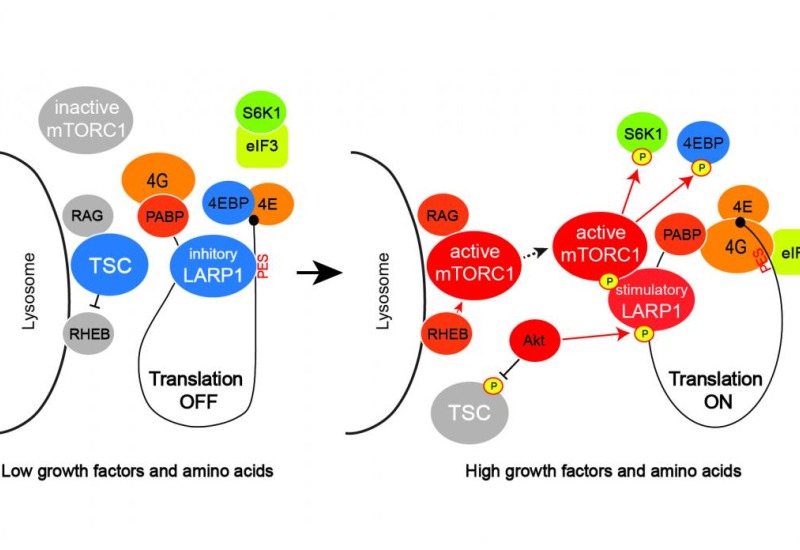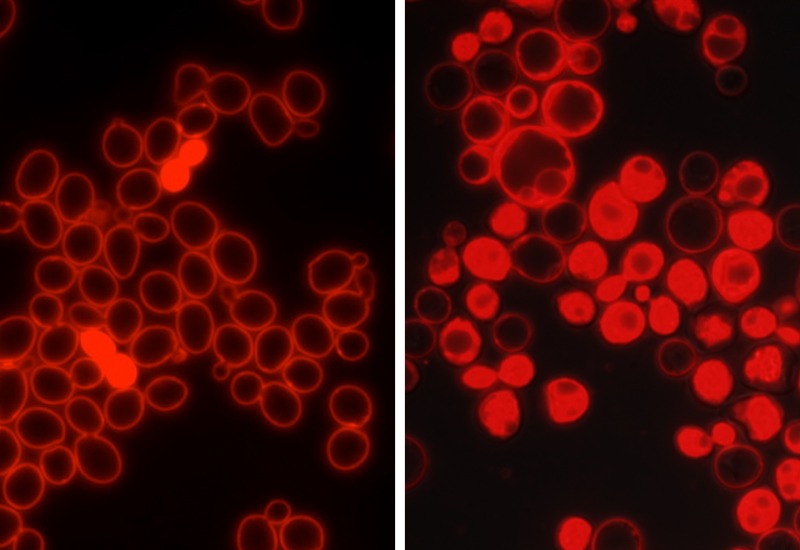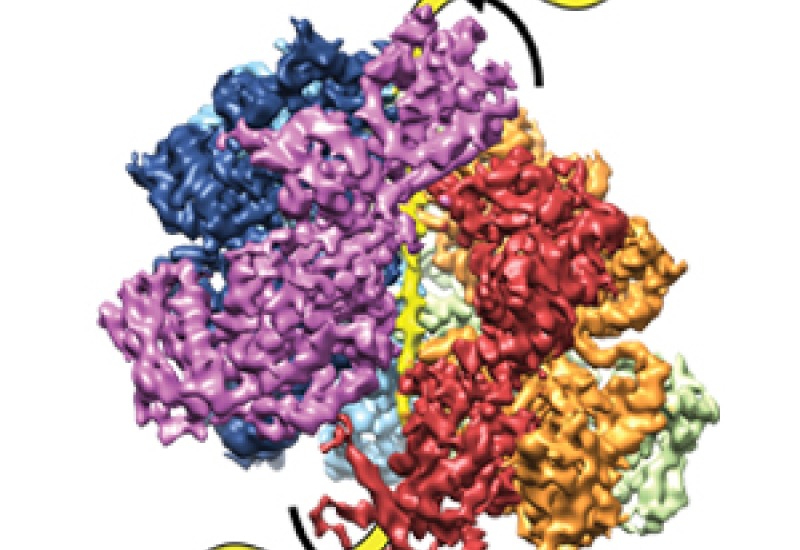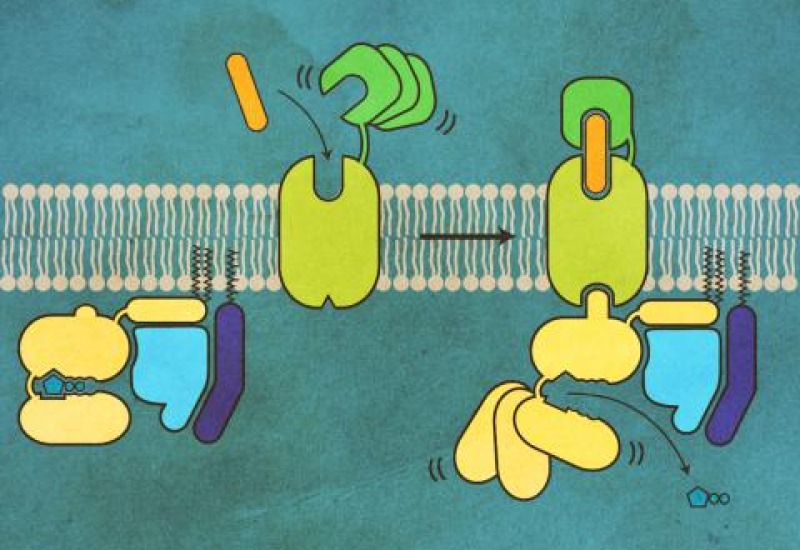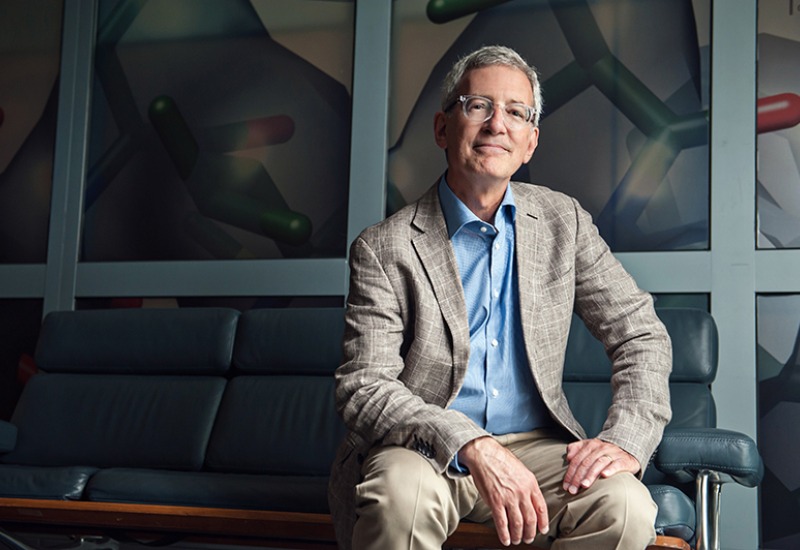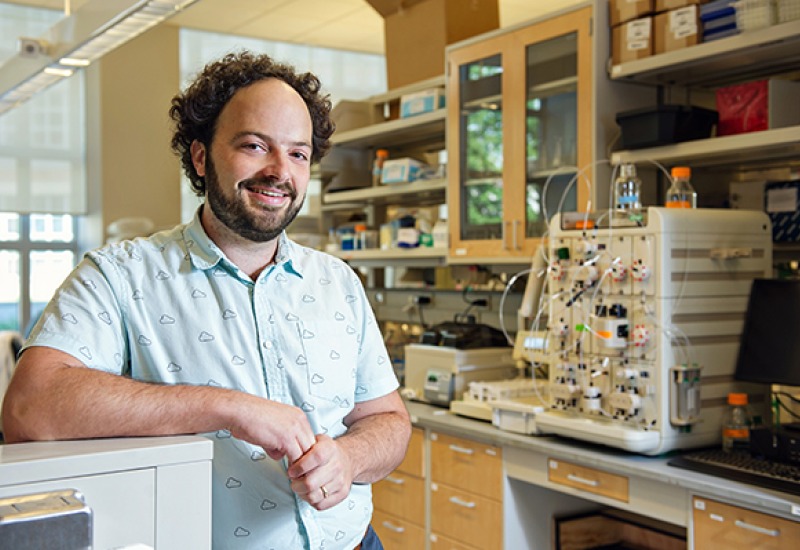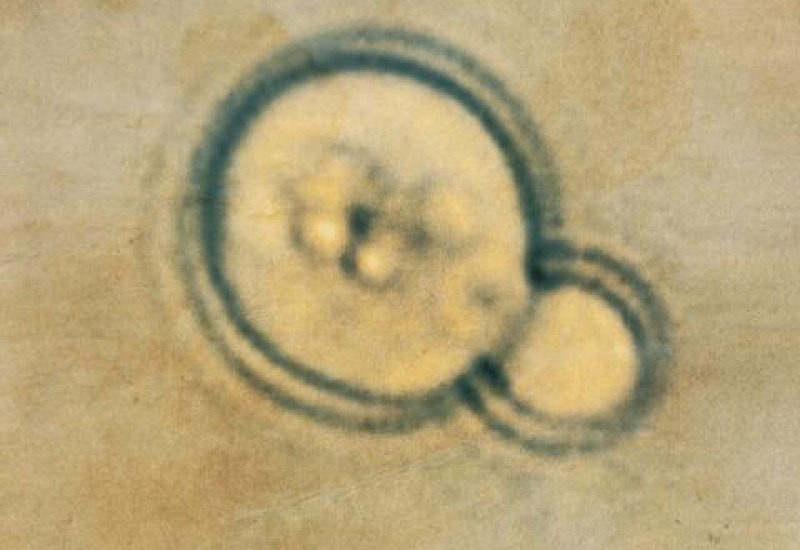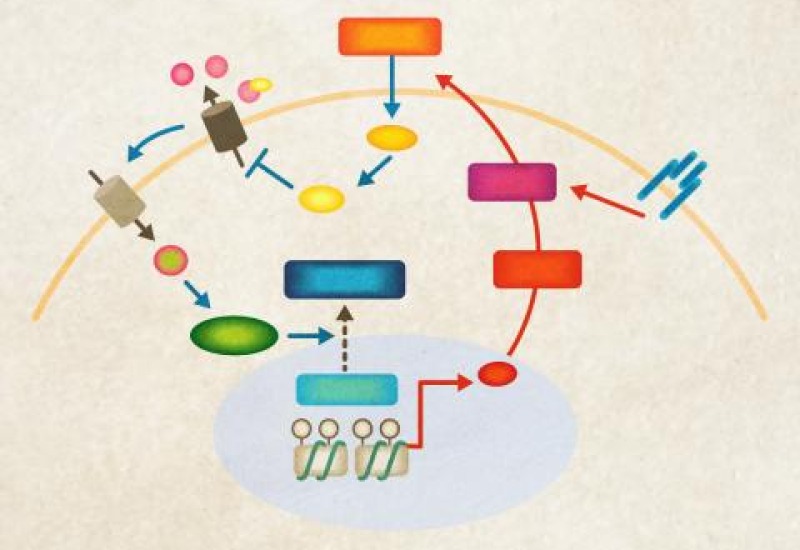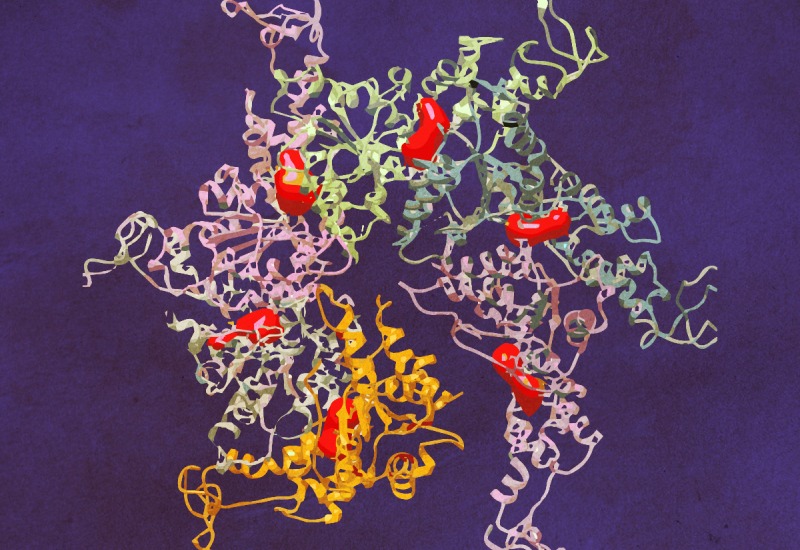LSI faculty member Daniel Klionsky receives Distinguished Faculty Achievement Award
LSI faculty member Daniel J. Klionsky was recognized for consistently demonstrating outstanding achievements in research, teaching and mentoring, service and a variety of other activities.
Chilled proteins and 3-D images: The cryo-electron microscopy technology that just won a Nobel Prize
LSI faculty members Michael Cianfrocco and Melanie Ohi explain the technology that won the 2017 Nobel Prize for Chemistry.
Springboard to 'Science': Students' leap into cryo-EM program leads to high-impact findings
How two U-M graduate students came to co-first author a high-impact paper and develop expertise in one of the hottest areas of biology.
Pure Science, Pure Michigan
In the last century, Michigan was a driving engine of America’s manufacturing economy. Today, programs like the Perrigo Undergraduate Fellowship at the LSI are helping to fuel a new knowledge-based economy in the state.
LSI adds new affiliate faculty role
The LSI expands its scientific reach with the addition of an affiliate faculty role. Affiliate faculty members will have labs located at the LSI — where they will have an adjunct appointment in addition to a tenure-track appointment in another unit on campus.
New understanding of protein machine function may aid chemotherapy development
Researchers have discovered how an unlikely protein promotes cell division, even when the cell is treated with drugs to halt the process
LSI welcomes new faculty member
The welcomes structural biologist Melanie Ohi, Ph.D., to its faculty.
Fellows program aims to develop life sciences leaders
To help attract early-career researchers of exceptional promise, the University of Michigan is launching a new, multidisciplinary, postdoctoral research fellowship program: the Michigan Life Sciences Fellows.
Gene mutation thought to protect heart may actually increase susceptibility to heart failure, researchers find
A mutation underlying the most common genetic cause of early-onset obesity was thought to potentially protect patients from heart disease. New research shows otherwise.
Symposium: Technologies that are rewriting the future of the life sciences
This year’s annual symposium explores the galloping pace of discovery, bringing to campus five pioneers and innovators in different areas of bioscience technology and research.
Research uncovers new clues to reproductive cells’ quality assurance program
Connectivity between reproductive cells — or germ cells — in males serves as a quality assurance mechanism by making clusters of cells more sensitive to damage.
Researchers identify factors driving brown fat development
How a network of proteins and long noncoding RNA work together to push fat cells into fat-burning mode
One amino acid, a whale of a difference
International research team reveals why some species of cetaceans evolved sleek, muscular bodies while others grow to massive sizes
No pain, no gain: investigating how painful experiences change neural circuits and behavior
Research sheds new light on long-lasting changes that painful stimuli can exert at the level of a neural circuit — changes that can have a powerful impact on behavior.
Repurposed asthma drug shows blood sugar improvement among some diabetics
After 12 weeks of taking an anti-asthma drug, a subset of patients with type 2 diabetes showed a clinically significant reduction in blood glucose during a clinical trial.
Oh, it's a switch
A long-term collaboration reveals the critical role played by the RNA binding protein LARP1 for mTORC1-mediated translation of an important class of mRNAs, including those that encode ribosome proteins.
Tangs for the memories
After a file cleanup unearthed a 1970s Tang commercial staring LSI Professor Emerita Rowena Matthews, we reached out to her for the backstory.
Newly identified protection mechanism serves as first responder to cellular stress
How a new type of rapid-response defense mechanism helps protect cells from environmental stress while giving slower, well-known protection systems time to act
Cryo-EM images reveal how key biological machine unfolds problem proteins
New cryo-EM research reveals 3-D snapshots of how a key biological machine unfolds a ribbon of protein through its central channel.
Scientists capture the first cryo-EM images of cellular target for Type 2 diabetes in action
Researchers have captured the first cryo-electron microscopy snapshots of a cellular target for Type 2 diabetes in action.
Roger Cone named vice provost, director of the biosciences initiative
LSI Director Roger Cone named to an additional role as the university's first vice provost and director of the biosciences initiative.
LSI welcomes new faculty member
The LSI is pleased to welcome structural biologist Michael Cianfrocco, Ph.D., to its faculty as an assistant research professor.
Figuring out how motor proteins know where to drop off their cargo
A new study sheds new light on how the motor protein myosin V knows where to release a yeast vacuole, when transporting it from the mother cell into a new bud.
Your muscles can 'taste' sugar, U-M research finds
An unexpected mechanism of glucose sensing in skeletal muscles contributes to the body’s overall regulation of blood sugar levels.
Ringing true: LSI scientists find solution to longstanding cell membrane puzzle
LSI researchers have developed a clear picture of a critical mechanism in the budding process that sends materials from the inside of the cell to far-flung places in the body.



